When it comes to remakes, the Switch has provided more than a few unexpected ones. There’s the Kirby’s Return to Dreamland one released in February 2023, which improves and expands on the original with a brand new postgame and final boss. There’s the unexpected Metroid Prime remaster, which takes an already fantastic GameCube title and makes it even better in HD.
And then there’s the Thousand Year Door remake that’s being released next year, finally providing a way to revisit that classic for those who missed out on the GameCube era.
Yet none of these are as insane as the Super Mario RPG remake released earlier this month. Indeed, with the original game being a coproduction by Nintendo and Square Enix, and rights issues holding back appearances from characters like Mallow and Geno even today, we were sure the title would remain as it always did. An odd curiosity that occasionally got wheeled out for a Virtual Console style service, and nothing more.
But that’s not the case. Oh no, in a move that was a surprise to just about everyone, Nintendo has released a full remake of the game earlier this month, complete with brand new visuals, upgraded music and all manner of new features and quality of life improvements.

So how does it fair overall? Is this remake the much-needed reimagining the title has been calling out for all these years? Or is it a disappointing remaster that brings shame to the original title?
Fortunately, the answer is the former. At least, for the most part. It’s Super Mario RPG done better, with everything you loved from the original title and more.
With the first notable change being the graphics, which now have a beautiful Chibi style somewhat reminiscent of the Link’s Awakening remake on Switch. It makes everything looks far better than before, with environments that feel like places rather than dioramas, and characters that are livelier and more animated than ever.
What’s more, it’s a faithful recreation too. Indeed, while the Mario & Luigi remakes got a lot of flak for trying to ‘modernise’ the original titles and make everything more homogenous with the Mario ‘brand’, this Super Mario RPG remake does nothing of the sort.
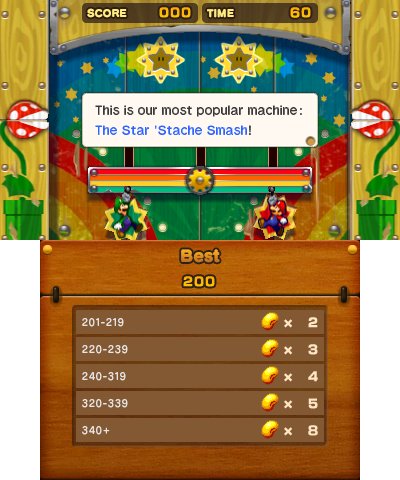
In fact, the Superstar Saga remake removed Geno’s cameo entirely! How amusing now his actual debut got a good remake!
Oh no, in this game, everything looks and feels like it did in the original. The enemies and bosses are still a mix of weapon themed robots and assorted oddballs, the NPCs still look as quirky as they did before (including the Toads!) and the cameos from Link and Samus remain intact. Hell, even the enemies based on other games are unchanged, with the Chained Kongs still being DK in all but name!
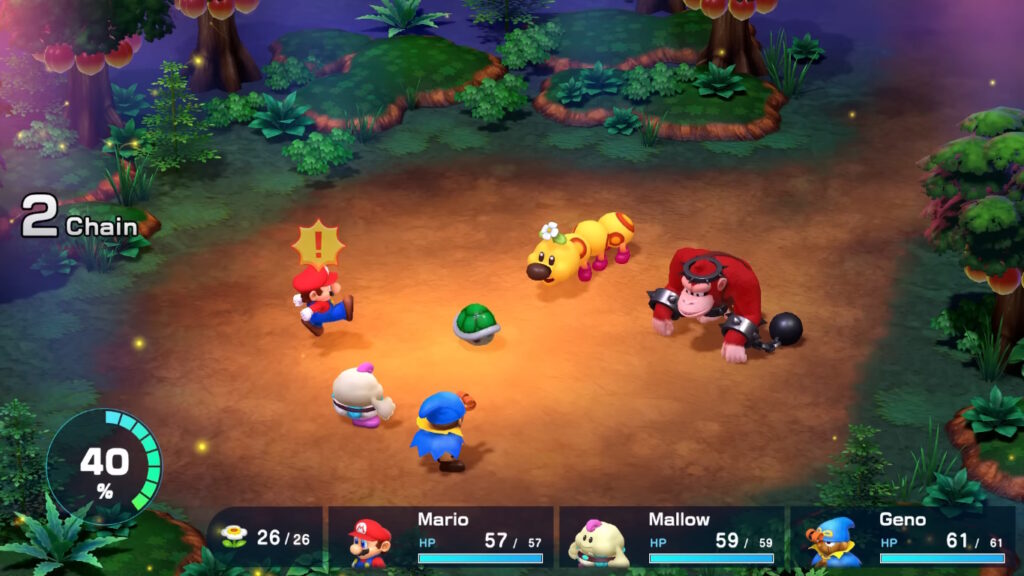
The descriptions for their stronger counterparts even make fun of the similarities!
It’s nice to see, and indicates that (at least where remakes are concerned) Nintendo is willing to let Mario subseries experiment with the cast and world like they used to. The era of New Super Mario Bros style standardisation is well and truly over.
What’s more, these aspects still hold up really well for those that didn’t grow up with the original game too. Indeed, with an interesting story full of clever twists and turns and charming characters left, right and centre, Super Mario RPG feels right at home with its successors in the Paper Mario and Mario & Luigi series.
With one of the main reasons for that being that every single moment has something interesting and unique to experience. Whether its Seaside Town being taken over by one of the Smithy Gang and you being tricked into retrieving the star for him, Booster trying to marry Peach without even knowing what a marriage is, or an imposter taking over Nimbus Land, every chapter of this charming adventure has something new and exciting to experience.
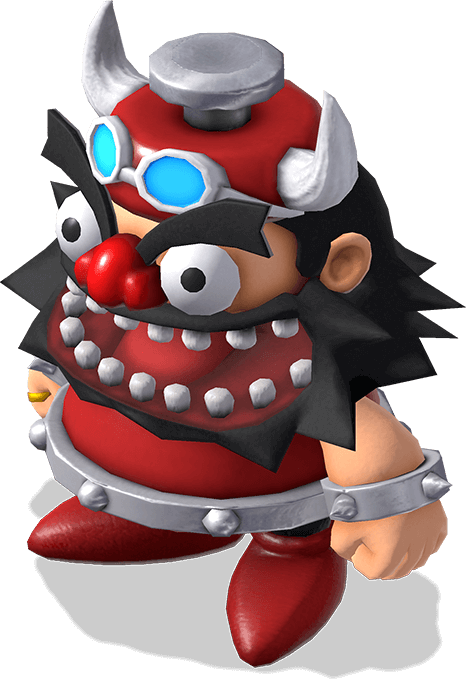
This guy is an odd fellow, to say the least…
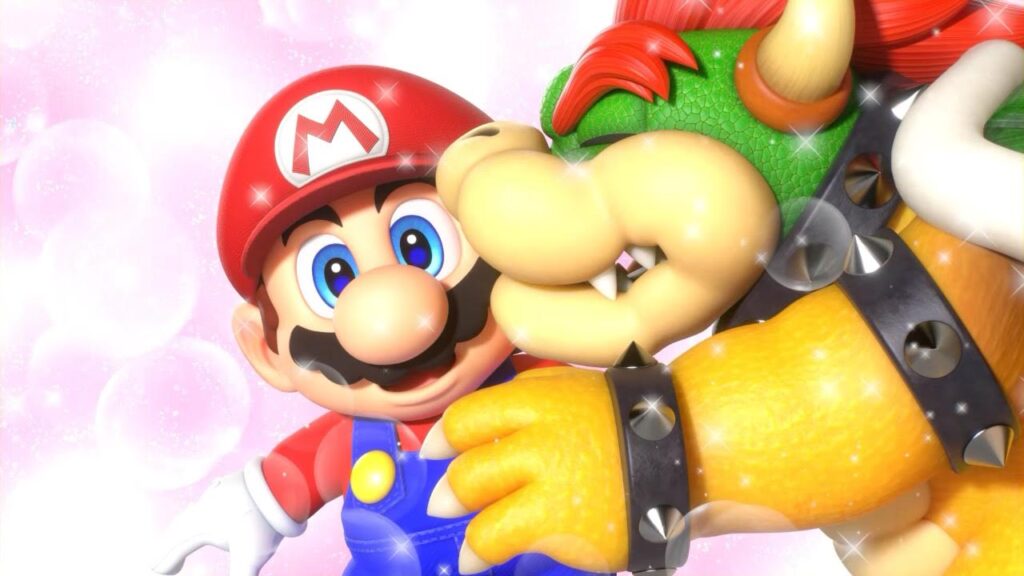
Yes there’s context for this scene. No, we won’t tell you what it is
It really is a good story, and one that holds up just as well as any Mario & Luigi or Paper Mario plot.
And the same goes for the gameplay and mechanics too. As you might expect, it’s a Mario themed RPG with action commands used in battle, and a mix of platforming and traditional exploration for the overworld.
In other words, the Mario & Luigi or Paper Mario formula. At least for the most part.
Where it differs from those games however is that it tilts just a little more towards the ‘RPG’ side of things than the Mario side.
For instance, the battle system has three characters in play at once, and a mix of physical and magical attacks to deal with. The former kind can be blocked with a guard if you get the timing right, whereas the latter are unblockable and must be dealt with via a careful choice of tactics and healing.
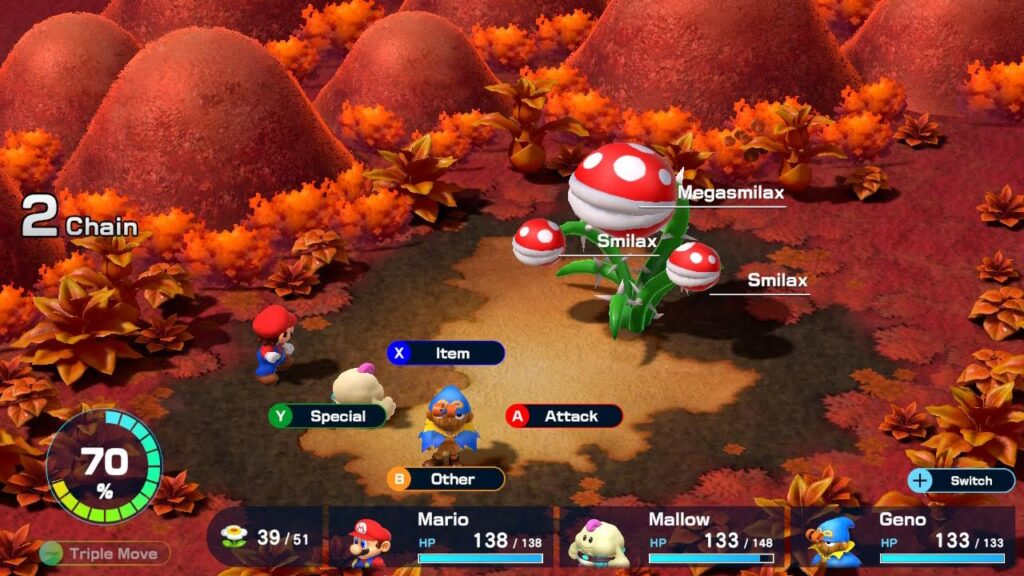
A typical battle in Super Mario RPG, this time against the mini boss Mega Smilax
And that kind of strategy focus carries over in a lot of other ways too. For instance, each of your characters have specific stat builds that play towards a certain style, and only a careful use of equipment will let you change that. So, you have to fight assuming Geno will go first and be a physical/special attacker, Bowser will be the brute, and Peach will be the healer, since their roles don’t really allow much else.
You also have to keep in mind that your equipment will change things dramatically too. Yes, the later Mario RPGs also did this a lot, with badges being a hugely important part of both the Mario & Luigi and Paper Mario titles.
But it’s arguably amped up to eleven here, since your very attacks depend at least partly on the equipment you use. Does Mario have a hammer equipped? Then he’ll be fighting enemies with hammer strikes in battle, at least when he’s not selecting a special move instead. Meanwhile if he removes the hammer and equips a Koopa Shell, gloves or other form of weapon, then his basic attack will change entirely, including the animations, action commands and damage dealt.
As for the special attacks? Yeah, those are basically like Paper Mario. You select one, press the right buttons with the right timing, and either obliterate an enemy with a super flashy attack move, or inflict a status on them depending on what you chose.
But again, they’re very much on the more ‘basic’ side compared to its successors. While Paper Mario had attacks where you had to aim with a crosshair or setup multiple timed inputs in a row, and Mario & Luigi turned Bros Attacks into full on mini games…
Super Mario RPG goes for the more stripped-down approach. You either press a button at the right time, mash a button/rotate the circle pad, or hold it to charge up a meter. That’s basically how every attack works in this title.
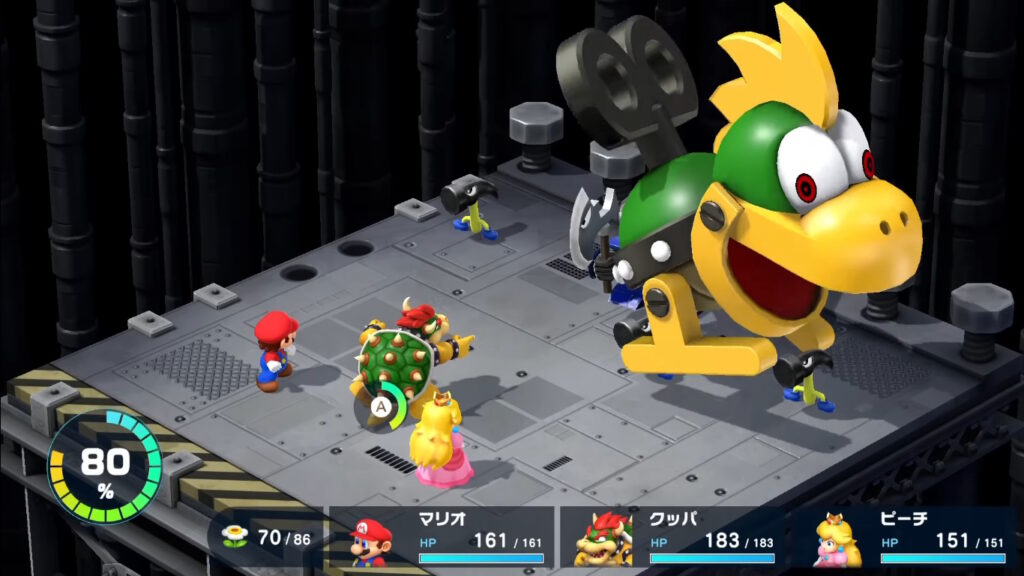
For example, you’d hammer A to use this particular attack
It’s a tad basic and it can be unintuitive sometimes (since the action commands don’t always directly tie into the on-screen actions in the way they do in later Mario RPGs), but it works well nonetheless, and it’s something anyone with experience in other Mario RPGs will get used to extremely quickly.
Either way, battles work well, and should mostly make sense to anyone who’s tried a later Mario spinoff in the same vein.
And the same goes for the overworld exploration too. Okay, it’s certainly simpler than in Mario & Luigi or Paper Mario, since it’s based on a game for the SNES where worldbuilding possibilities were a lot more limited and where 3D Zelda style puzzle dungeons weren’t really possible…
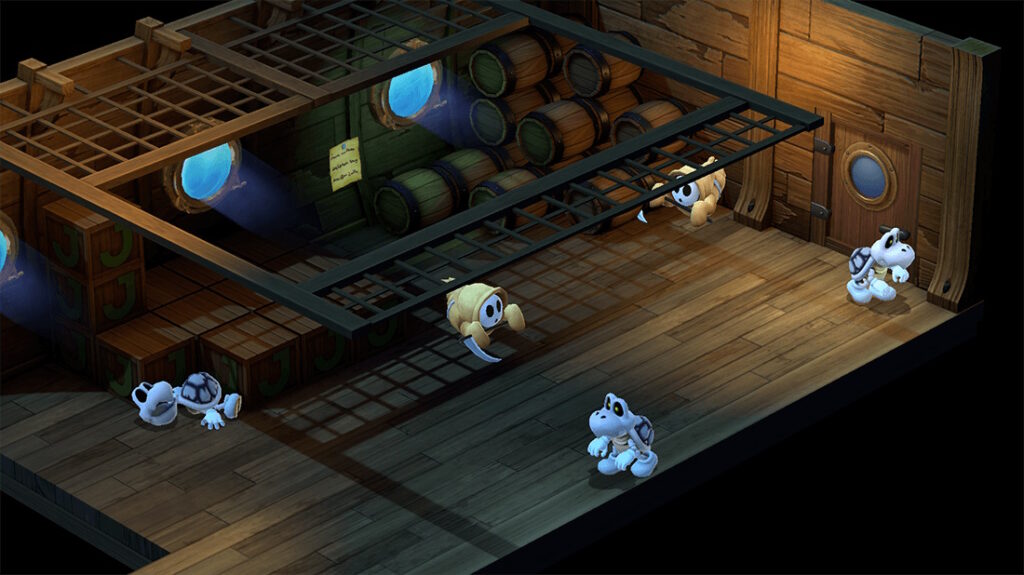
An overworld area in Super Mario RPG, this time in the Sunken Ship dungeon
But it does work well, and Mario’s moveset is incorporated into the exploration near flawlessly. He can jump anywhere he wants (yes, even in buildings and on ledges that would potentially be considered out of bounds in other RPGs!), and there are plenty of environment objects and items to take advantage of that. There are blocks to hit, flowers to bounce off, moving platforms to jump across lava with and vines to climb to name just a few, and they keep the game feeling as much like a Mario adventure as they do a Final Fantasy clone.
This is helped even more by the fact the game has so much variety in terms of characters and story beats, as well as the sheer number of secret areas and optional things to do. For example, that Yoshi’s Island themed area where you race Boshi? Doesn’t actually need to be tackled at any point in the adventure. You can just ignore it entirely if you’re a completionist.
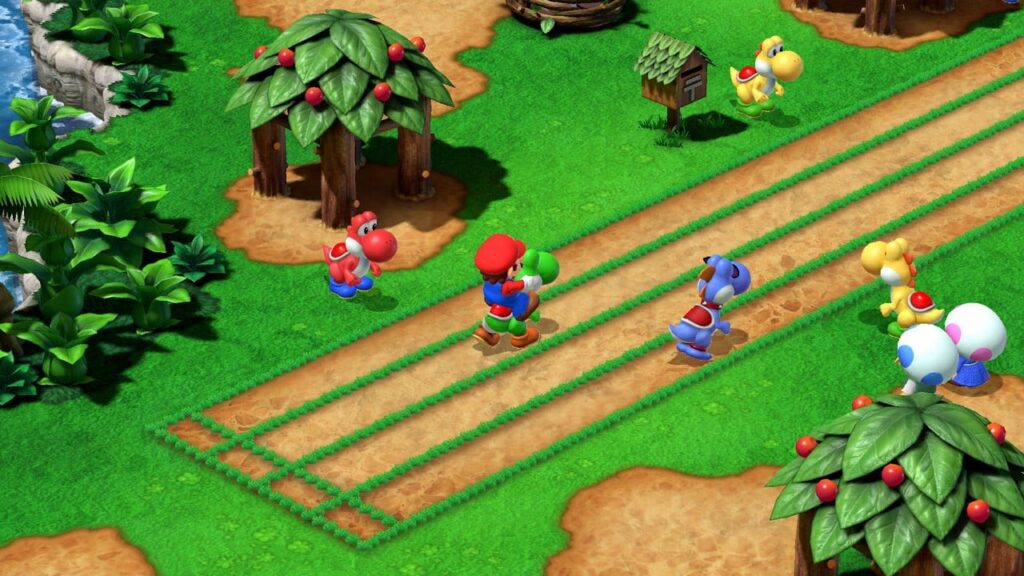
This area is actually entirely optional
Same goes with quite a few other areas, mini games, boss battles, etc.
So, while there’s definitely a clear path from A to B, the game does keep things fresh along the way, with plenty of Mario style adventuring and unique mechanics to keep you occupied.
However, the game does have its issues, and the exploration aspect of things brings up a few of the main ones.
For instance, the design of these areas can seem a tad… mixed in terms of quality overall. You’ll have full blown dungeons and towns with tons of things to do (like Rose Town and the Forest Maze, Seaside Town and the Sunken Ship, Nimbus Land and the royal palace there) …
Mixed in with areas that feel just a tad rushed, like Barrel Volcano, Belome Temple and the Land’s End/Beanstalk Valley region. They’re never bad per se, and the number of amazingly designed areas definitely outweighs the lesser ones…
But you can definitely notice a few places that don’t feel as fleshed out as they perhaps could have been.
The game also runs into a few issues with its isometric camera too. Namely, it can make it rather tricky to aim your jumps, especially across moving platforms or hanging vines.
And while this isn’t a huge deal for most of the game, it gets a tad irritating during the revisit to Bowser’s Keep, where two of the rooms are heavily action/platforming based, and the platforms are perhaps a tad too small to make it work well.
So perhaps it would have been better if some of the platforming was adjusted there, or a movable camera was added to areas which were more platforming heavy.
That brings us to the game’s difficulty and replay value.
Which is honestly a tad weird to be honest.
Why?
Because to put it bluntly, the game almost feels like it’s split into two halves; the main game (which is mostly incredibly easy), and the postgame (which is… not).
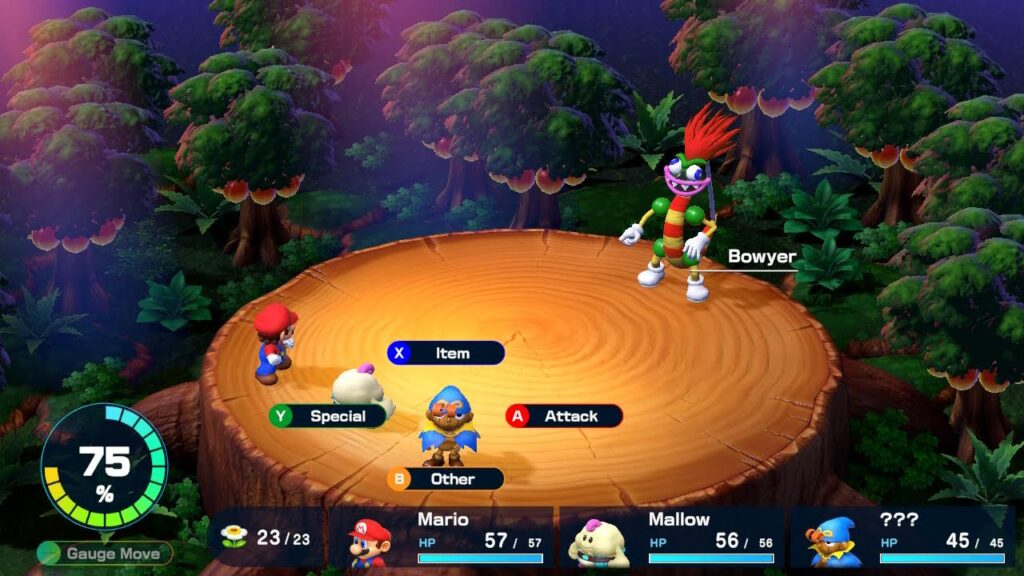
The battles against story bosses like Bowyer here are definitely on the easier side
And there’s not really much of a gradual transition between the two. The difficulty shoots up with the final boss, then jumps about tenfold when you get into the postgame, and that’s that. It got to the point where we completely trounced the main adventure without any real strategy (and only a surface level knowledge of the game’s mechanics), then got our asses handed to us time and time again in the boss rematches.
This is mostly because said postgame battles are very, very heavily puzzle/strategy focused compared to the rest of the game. For instance, you’ll refight Booster in his tower, and all seems normal…
Except he’ll spend his entire time preparing his train. If you don’t interrupt that by attacking first (like with Geno), he’ll then use a one hit kill move that’ll hit the entire active party for 9999 damage. Meanwhile his minions will then keep posting his speed with a special move, and if you don’t deal with them quickly enough, have made Booster so fast he’ll outspeed even Geno, leading to a quick game over.
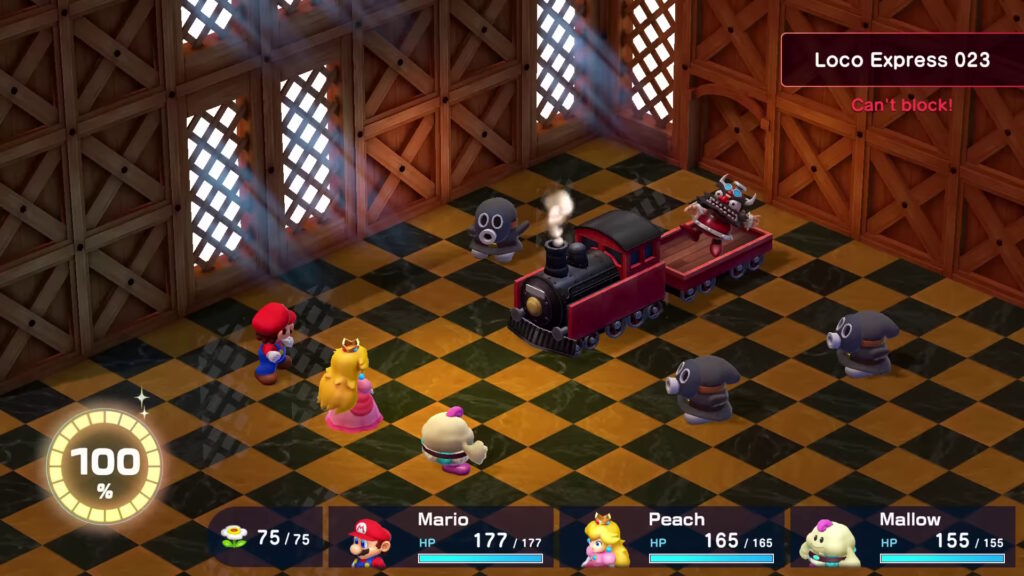
The rematch with Booster is absolutely brutal
Every postgame boss is like that in a sense, where you have to do your best to avoid/counter their one hit kill moves and finish the fight without getting immediately overwhelmed.
It’s certainly a fun challenge, and it certainly tests dedicated Super Mario RPG fans, but it still feels a bit jarring nonetheless due to how sudden it all is. It’s like if Super Mario Bros Wonder had you go from world 3 to the special world with nothing in between, or if Tears of the Kingdom made the main overworld a cross between the Depths and the last game’s master mode right after getting off the Great Sky Island.
So maybe a bit of tweaking could have been good here. Perhaps a few of the bosses could have been ramped up a bit difficulty wise to get you used to the strategy needed for certain late game battles ahead.
100% completion is also a bit of a nightmare, since Super Mario RPG feels a tad obtuse in that regard, especially compared to most games released since.
No, we’re not talking about the Monster List here either. Using Thought Peek on every enemy is a tall order, but it’s one that you may well achieve by accident, and it even has a Hyrule Compendium style option to buy said entries too.
No, we’re talking about the other, less obvious completion requirements.
Like say, the infamous Grate Guy’s Casino. How do you even find and enter that area?
Well, first you need to get the Bright Card to enter, so you have to trek back to Booster’s Tower, climb halfway up the tower to meet Knife Guy, and beat a certain mini game 14 times in a row.
Then once you’ve got that, you need to go to Bean Valley, find a particular room with a Golden Chain Chomp, defeat it, jump about three times where it was standing…
Then ride a hidden block to an exit that takes you to the casino. It’s a ludicrous procedure, and one which makes you wonder how anyone is supposed to figure it out with either a guide, a friend who’s played the game before, or a hell of a lot of trial and error.
What’s more, even getting to the casino isn’t the end of the story. No, if you then win a certain mini game against Grate Guy 100 times, you get a special item there too.
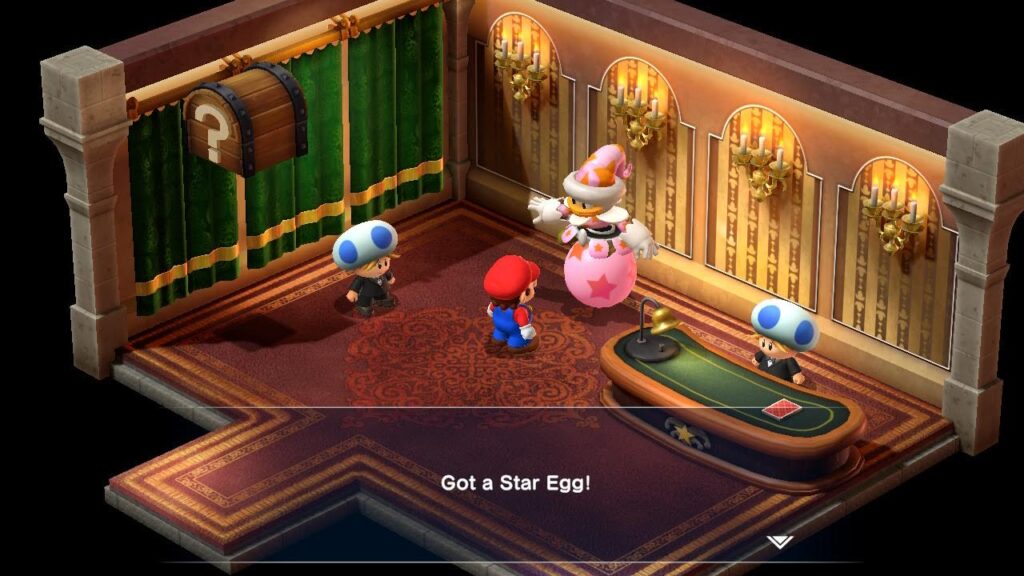
Getting this item is one heck of a slog…
This sort of trial-and-error design is not uncommon for 100% completion or secrets either. Nope, you’ve got hidden blocks to find, at least two of which are in areas which seem like they should be out of bounds.
Plus, you’ve got the Sheep Attack item and how you even get that.
This is one of the most insane examples of nested secrets we’ve ever seen in a game, and there’s a very good reason why. Basically, to get this rare item…
You need to have Peach use the Mystery Egg item in battle 10 times while wearing the Nurture Ring, which changes it to the Lamb’s Lure.
Then change 48 enemies into sheep with the Lamb’s Lure in order to change said item into the Sheep Attack.
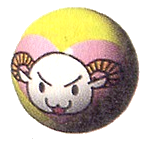
Another very annoying item to obtain
It’s an absolutely insane process, and one which feels completely impossible to figure out without a strategy guide.
And some of the new secrets aren’t much more obvious. For instance, did you know you can get a medal icon for every mini game you get a high enough score on?
Yeah, we didn’t either. But it exists, and the score needed to get said medal is never exactly made too clear either. For example, you’ll need to beat Knife Guy’s mini game 50 times in a row to get it, and collect 100 coins in the Midas River, neither of which are particularly obviously or reasonable requirements.
Still, it’s not all bad news there. No, while the remake does have its fair share of obtuse secrets both old and new, it does make a few welcome fixes to others to make them more reasonable. For example, any items gained from winning certain mini games (Booster’s Amulet and the Feather) can now be purchased from a shop as well, making them impossible to miss.
Other useful changes including automatically giving you Thought Peek entries for bosses and enemies you skipped or can’t use the ability on (like those encountered before meeting Mallow, or Booster if you beat his mini game), making special items impossible to sell (like the Lazy Shell, Bright Card, Star Egg, Sheep Attack, etc) and providing a method for players to reach the hidden block in Peach’s Castle at any point in the game.
So at least you never have to restart your entire save file because 100% completion became impossible.
Either way, onto a topic we forgot to discuss earlier. That being, the music and sound effects.
With the former being as great as ever. The original game already nailed the soundtrack as is, with the likes of Beware the Forest Mushrooms, Fight Against an Armed Boss, Booster’s theme and just about all the songs relating to the final area being absolute classics that hold up to this very day.
And the remake does a great job reimagining those for a new audience too. You’ve got HD versions of all of them, plus the ability to switch between the two at any time as well. So as far as music goes, the remake absolutely nails it.




Sadly, the sound effects are a tad less exciting. On the one hand, the everyday stuff is fine. There are clear and fitting sounds for things like jumping, attacking and interacting with the environment, and those do work well…
But there’s nothing resembling voice acting or even grunts here. It’s kinda jarring really, especially in the more cinematic cutscenes and moments where you’d think the characters would at least say something or another.
Ah well, it’s not the end of the world. The original game didn’t have voice acting in any form, and it wasn’t really necessary to add it here either. It just would have made the game a tad more immersive if it was.
Either way, that’s Super Mario RPG for you. It’s a great RPG, and one that generally holds up very well all these years later. With charming characters, a fun story and great gameplay, it’s an amazing RPG, and it’s one that’s only been made better by the remake on Switch. Definitely check it out if you haven’t played it yet, or need a reason to revisit the game in 2023!
Still, what do you think? Does the Super Mario RPG remake live up to the hype as far as your concerned? And if you’re a longtime fan, how do you feel it holds up compared to the SNES original?
Leave your thoughts in the comments below, on social media, or on our Discord server today!